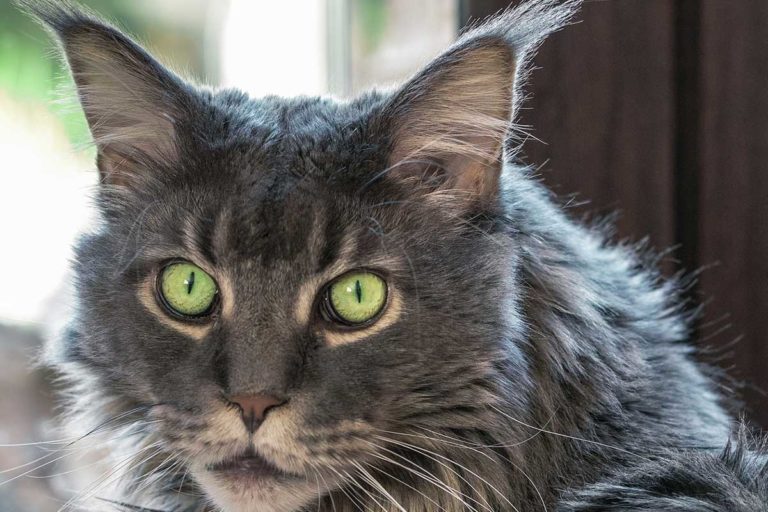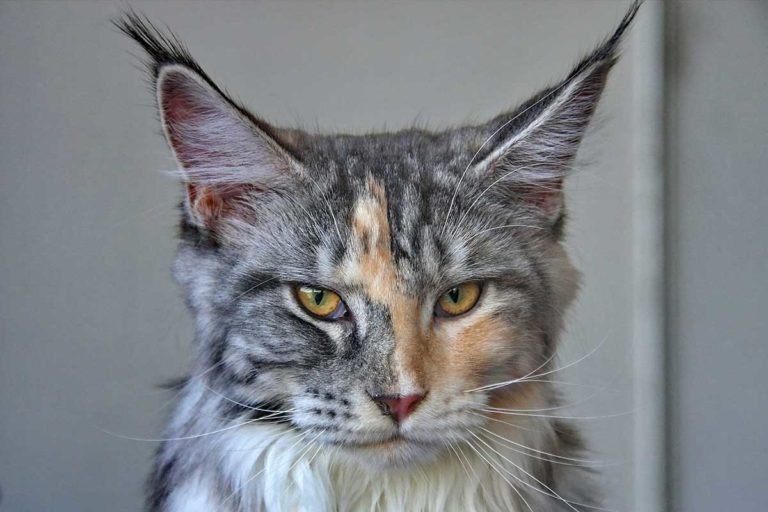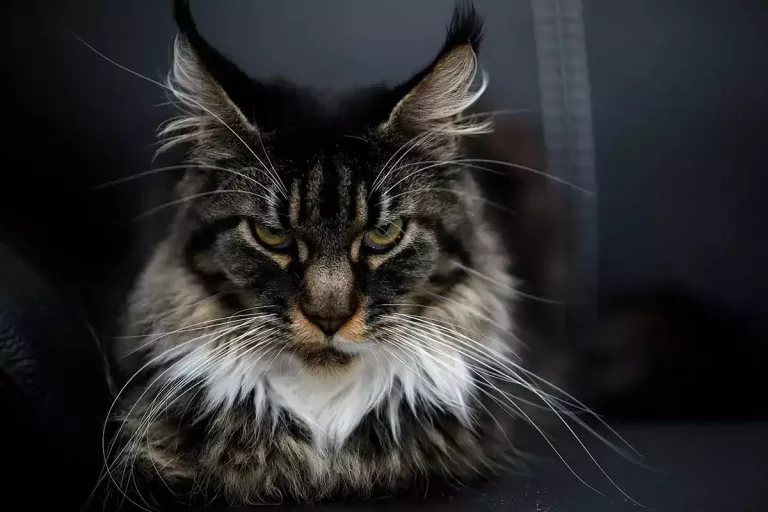
Polydactyl cats, also known as Hemingway cats, get their name from the original Greek word polydactyly, which means multiple or extra toes. Unlike humans, dogs, or any other species, where this trait is not so common, in felines it’s pretty standard and primarily affects cats in the United States, Wales, and England. The average cat usually has 18 toes, with four on the back legs and five on the front legs. A polydactyl cat may have up to eight toes on each paw.
Why do some cats have extra toes?
Polydactyl cats are born with extra toes due to a genetic mutation that was first recorded on ships from Boston and passed on to them by one of their parents. A kitten born with this mutation is in no danger and can lead a normal life like any other cat. The only danger that can occur to these cats is an infection or small complications that are usually eliminated surgically.
Many myths and folk stories surround these animals that are also known as Hemingway cats, taking their name from the famous writer, and a recognized fact about him is that he was the owner of many cats and more than half of them were polydactyl. In addition, polydactyly was most prevalent in the Maine Coon breed, and over 40% of them had this trait.
A few years ago, the polydactyl Maine Coon was eliminated by breeders, but in recent years it has begun to make a comeback and gain more and more popularity. A polydactyl ginger tabby cat holds the record for the most toes with 28 toes, and each toe had its pad and nail.
The History of Maine Coon Cats and Why They Are Such a Popular Breed
Looking back a few hundred years, it seems that these cats were very popular among the ships sailing between Britain and New England and there is still some controversy about where they came from. Their popularity was due to their fantastic hunting skills at the time, and they helped prevent rodent overpopulation. The Maine Coon breed is considered to be the first breed of cats to have been born with this specific trait, and it is still observed in them today.
The official cat of the state of Maine, the Maine Coon is one of the oldest and largest breeds in North America, but there is no record of the exact origins of this cat. Some speculation has arisen around the history of how the Maine Coon came to live in North America, but most of it is just folklore without any solid foundation.
One folk tale suggests that Marie Antoinette, the queen of France, tried to flee the country with her favorite Turkish Angora cats. She did not make it to North America, but her cats did make it to Maine where they mated with shorthair breeds.
The generally accepted assumption in the cat breeding community is that the breed is the result of mating local shorthair breeds with longhair breeds imported from overseas. There is a strong resemblance between the Maine Coon and the Norwegian Forest Cat. In the late 19th century, this particular breed was a favorite at cat shows, but declined in popularity when another type of longhair cat was introduced in the 20th century.
Are polydactyl cats born with extra toes?
Yes, polydactyl cats are born with extra toes, and this is diagnosed during the physical exam, where the veterinarian can see the extra toes and determine if they are bone or extra tissue. In most cases, polydactyly does not require treatment and the kittens will lead healthy lives.
Polydactyly is of two types, preaxial where the extra toe develops before the dewclaw and postaxial where it develops after the fourth phalanx. This genetic mutation is passed from a polydactyl cat to its offspring, and since this gene overrides the other normal genes, even if only one parent has this trait, there is a good chance that the kitten will be born with extra toes.
Are Maine Coons the only cats to be polydactyl?
Some rumors suggest that the first breed to exhibit polydactyly was the Maine Coon. Some people confuse polydactyl cats with a specific breed, but any cat, regardless of breed, can be born with extra toes. However, it is Maine Coon cats that are confused with the term polydactyly, and the mutated gene is found primarily in this breed, more than in any other type of cat. As a result, a polydactyl Maine Coon cat, aided by its extra toes, has become an excellent hunter and, if allowed to progress naturally, will acquire the ability to use these counters in ways we cannot yet imagine.
Are all Maine Coons polydactyl?
Not all Maine Coon cats are polydactyl, and breeders have tried to eliminate this mutation, and no veterinarian will advise you otherwise. Even though the risk of developing an infection or other serious health problem due to polydactyly is close to zero, some complications can still occur, which is why they do not support breeding polydactyl Maine Coons.
The genetic defect, although eliminated from the Maine Coon, is slowly beginning to make a comeback into the mainstream as it gains popularity. If breeders had not tried, and the cats had bred naturally, an estimated 28% of Maine Coons would have had this trait.
Polydactyly does not produce other health complications in most cases, but owners should keep a close eye on the pawn for complications such as nail growths or pain. This unusual trait is more of a quirk than a deformity, and the cat’s health is not in imminent danger and it can play and run around like any other cat.
What does this mean from the owner’s perspective?
A little extra care on the part of the owners of polydactyl Maine Coon cats should keep their pets out of harm’s way. Some happy owners report that they have had no difficulty in raising and grooming these wonderful cats. Owning a polydactyl cat should not be that different from owning a normal cat, just a little more care.
If you are the proud owner of a polydactyl Maine Coon cat, you should buy your favorite pet a scratching post. Having extra toes means he can destroy your furniture faster than the average cat. Also, as an owner, you should make sure your cat does not have feline radial hypoplasia, which, like polydactyly, causes extra toes to grow, but the same size as the normal toes. Breeding cats with this mutation can affect subsequent generations and cause severe leg deformities.
Is it painful for the Maine Coon?
The polydactyl cat has no difficulty running and playing and having an extra toe is not painful for them. It is worth mentioning that because of their abnormality, they gain dexterity and agility, which makes them incredible hunters. Sailors did not consider them lucky without a reason.
In some cases, polydactyly can cause infections, or the gene mutation can spread and lead to heart complications. Surgical removal of the extra toes is a preferred method for some owners, which reduces the risk of infection or injury.
Does this affect the balance or hunting ability of the Maine Coon?
Polydactyl cats were famous centuries ago for their amazing hunting abilities. The extra toes helped the cats gain better balance and agility. Most sailors wanted to have this type of cat on board, as they were considered lucky and were known for their ability to control rats.
Polydactyl cats are not as common as they once were, but a growing trend has made them more popular, and breeders are no longer purposely culling them. If this happens in a few decades, the offspring of these polydactyls may learn to make better use of their extra toes, and perhaps humanity will witness some things now considered impossible for a cat.
Should You Consider Adopting a Maine Coon with Extra Toes?
The Maine Coon adapts to all kinds of personalities and lifestyles, and will happily receive attention, but is not dependent on it, and if you don’t have time to pet the cat, it won’t ask for it. They are known to be agile hunters, so no mice will enter your home as long as a Maine Coon cat is watching over you. Owning a polydactyl cat is no more difficult than owning an ordinary cat, and generally no special treatment is needed, other than an occasional check of their extra toes, to make sure all is well.
Owning a Maine Coon polydactyl cat or any other breed of cat makes you responsible for them, so whether they have extra toes or not, you need to cover their needs.


